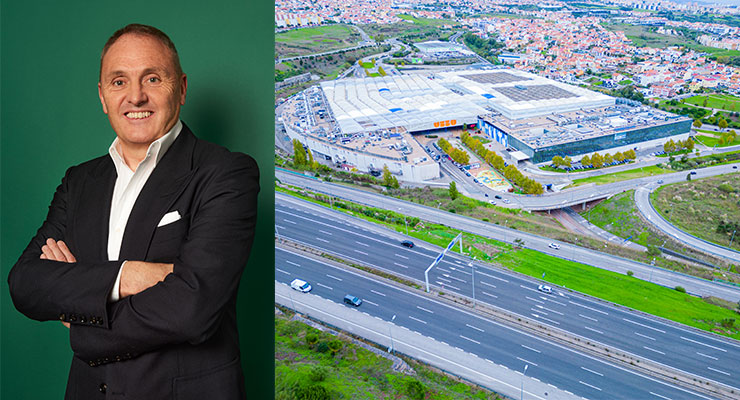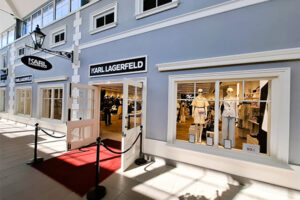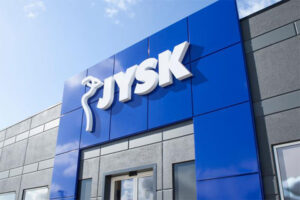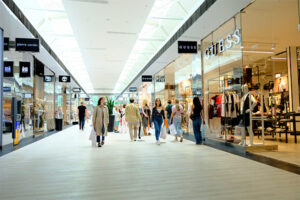ACROSS: Your colleagues have described you as a highly creative person. What do they mean by that? What role does creativity play in the development and management of shopping centers?
IAN SANDFORD: My team would call me creative – I would call myself experimental. My top priority is to create places that I like to go to – places where I want to be with my family and friends. It’s about feel-good places. I’m not creative, but I go through the world with my eyes open, take things that I like and find pleasant, and try to implement them at our centers. That doesn’t require creativity, but it does require courage. It’s about taking risks. If an idea or project works, fantastic. If it doesn’t work, that also gives us clarity.
ACROSS: Failing is painful – financially speaking as well.
SANDFORD: In our industry, in particular, you have to experiment a lot – even with things that nobody has dared to do before. Of course, that’s difficult, especially if something has failed before. It involves a lot of work and a lot of money, but forgetting about mistakes can also be helpful. In that respect, I try to be like a goldfish that swims laps around its fishbowl – after each lap, it forgets that its right back where it started.
ACROSS: You coined the term “shopping resort” and introduced it to the industry. What does the term mean?
SANDFORD: People who come to our centers have chosen to spend time with us. Theoretically, they can shop online. As such, we are no longer a necessary retail destination. Today, we’re competing for people’s time. We all have so much to choose from regarding what we can do with our time. Shopping centers must have clear profiles and offer many opportunities to experience and do things. That’s why we use the term resort; we want to be a vacation spot for our guests.
ACROSS: Your first shopping resort was Puerto Venecia in Zaragoza, Spain.
SANDFORD: Yes, we opened Zaragoza in 2012. Of course, the aim was to offer a fundamentally new experience, but we also knew that we couldn’t change too much. Otherwise, the message would be lost, and people would be irritated. Therefore, we only changed two words – enough to convey all our new ideas. We called it a shopping resort, not a shopping center, and we called the people who visited us our guests, not our clients. Our clients are H&M, Zara, the Inditex group in general and so on; our guests are the 20 million people who come through our doors, and we must look after them.
Where the shopping resort was born: Opened in 2012, the 206,000-sq m Puerto Venecia development marked the birth of the “shopping resort” concept. It has been an outstanding success, attracting more than 20 million visitors annually. It is a retail-oriented, mixeduse scheme that has redefined the guest experience and what can be achieved within the public realm. It includes over 40 restaurants, 13,500 sq m of leisure facilities, and a large lake at its heart. Puerto Venecia represented a major leap forward in the industry, combining the best of retail with open spaces, dedicated areas for children, and leisure activities for the entire family.
ACROSS: You recognized the importance of leisure and gastronomy early on and implemented those concepts in Zaragoza. Please explain how that decision came about.
SANDFORD: Spending time together, whether as a family or as a group of friends, means doing things and, of course, eating. There are few things more associated with socializing than eating or playing together. We built a scheme in the north of Barcelona, just before Zaragoza. An AMC 24-screen cinema anchored that place as one of their first outlets in Europe. AMC asked us to add more leisure around the area. We could see how well that worked, but it was not in a retail environment. There was a retail park nearby, but it lacked great placemaking.
ACROSS: So, that experience motivated you to combine great gastronomy, leisure, and shopping at Puerto Venecia?
SANDFORD: We wanted to have a great leisure component, a great retail component, and a retail park component. When we built Puerto Venecia, we originally opened the IKEA independently. It was alone in the middle of this enormous building site. I asked management: What do you expect to happen regarding your turnover when we open the retail park? What will happen when we open the shopping center? They answered: We expect turnover to increase slightly when you open the retail park and to go down when you open the shopping center, because it will be a competitor for people’s time. Indeed, turnover went up when we opened the retail park, and then it increased again when we opened the shopping center. One of the main reasons was that people had the opportunity to eat at IKEA for the first time, because we positioned IKEA right in the middle of the development.
ACROSS: So, did the meatballs cause the increase in turnover?
SANDFORD: Of course, there were plenty of restaurants around, but people stayed much longer at IKEA, because they could eat there. While they were eating, they were thinking about whether they should buy what they had seen before. Arthur Ryan, the founder of Primark, once told me that you only have to think about two things in retail: how to get people there and how to keep them there. Leisure is a big part of how you get people there. Food plays a big role in getting them to stay.
ACROSS: How do you translate the resort idea to the individual location?
SANDFORD: In Puerto Venezia, we see beautiful placemaking. It has this beautiful lake at the heart of it. It is easy to call it a resort, but it’s not about the physicality of a place. It’s about the mental concept of a place. An essential part of transferring the idea to other places is our resort school, which takes everyone who works at the center and puts them through a training program that covers our mission, values, and vision of what we want to achieve. The most important thing is the guest. They need to feel comfortable because they cover all the costs and salaries. That’s why everyone, including me and the management, has to do everything we can to ensure that they enter the best possible place. These are the little things we teach. When I walk through a center, I pick up everything that’s on the floor. Of course, it’s not about picking up a piece of garbage, but about welcoming our guests. The Resort School teaches exactly that: to walk through the center with open eyes and to take responsibility for it.
ACROSS: Does it also help to reduce staff turnover? Retail, in particular, has great difficulty finding and retaining employees.
SANDFORD: Absolutely. Our staff is very loyal. Part of that is due to the Resort School and the idea behind it, but there is more. We have great team spirit. I recently visited Puerto Venecia. We sold the property many years ago, but there are still so many familiar faces there, all of whom greeted me. It was a pleasure. Employee retention works. Every year at Christmas, we have a big dinner. Every employee, from the office staff to the cleaning teams to security, sits at the table; management serves as the wait staff. It’s a simple way of saying thank you that has a significant impact. Of course, money motivates people to work, but you want to wake up and have a good feeling about going to a place that is important to you.
ACROSS: With the acquisition of the Rhein-Ruhr Zentrum, you entered the German market for the first time. Why did that asset, in particular, convince you?
SANDFORD: We never had strategic plans for Germany. We focused on the UK and Italy. One of the players who had previously sold the Rhein-Ruhr Zentrum from Blackstone to Morgan Stanley came to me and said, “Ian, this is currently for sale. It’s a great center. The location is promising, and the price is right.” I never let an opportunity get in the way of the strategy, so we looked at the property carefully.
ACROSS: It obviously convinced you.
SANDFORD: Yes, there are some incredible things there. It’s right on one of the busiest motorways in Germany. There’s a ring road that goes around the center. There’s a subway station. There are 12 million people within a two hour drive. You won’t find that kind of infrastructure anywhere else. A shopping center that has not been sufficiently invested in for decades stands right in the middle of it all. It needs a lot of love and attention and has to be restored to its former glory and repositioned for the future. About three months ago, we had a big workshop about designing the next marketing stage for the leasing of the Rhein-Ruhr Zentrum. We were very advanced in the leasing process and discussed how to create marketing material for it. We quickly came to the conclusion that classic material such as a center card would be unnecessary. Everyone in the catchment area knows the center. It is so deeply rooted in the population and has been for generations. We have to explain our actions, because everyone has a story associated with the center. The Rhein-Ruhr Zentrum is the grande dame of German shopping centers, but it needs a facelift.
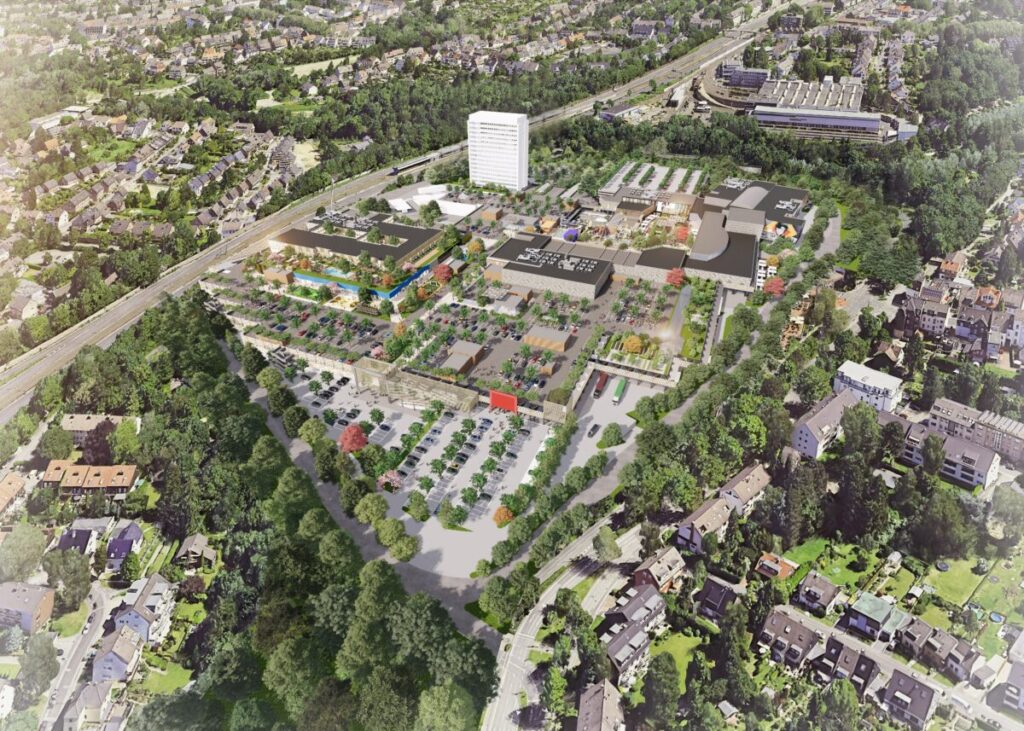
ACROSS: What are some of the highlights of the project?
SANDFORD: The concept is to give our guests an opportunity or an incentive to come to the Rhein-Ruhr Zentrum every day – be it for shopping, F&B, or entertainment. The idea is to cover everyday shopping, dining, and entertainment, so we’re starting with the convenience mall. The center has been designed right in the middle of its parking lot. That way, we can quickly get people in and out of the center. The guests should be able to feel that convenience. They should be able to do their bulk shopping at the supermarket, then continue shopping comfortably.
ACROSS: Isn’t it about keeping people at the center for as long as possible?
SANDFORD: You can’t force people to do things. People should want to do things. I don’t believe in the model in which you force them to walk through the entire store. If I want to buy a loaf of bread and leave, I should be able to do that as easily as possible. Hence, the idea of the convenience mall is to offer numerous shops, bakeries, and beauty services, such as hairdressers, that serve everyday needs. That part is almost like a separate mall within the shopping center. That’s the first phase, which is expected to generate a lot of customer traffic.
ACROSS: What else is happening?
SANDFORD: We will completely redesign the west wing to create large fashion spaces. At the moment, there are no major fashion retailers or stores at the Rhein-Ruhr Zentrum apart from H&M and Galeria. The leisure and F&B area is another big part of the project. All of those things are running simultaneously: the shopping center, the west wing, and the leisure area. We have already signed a new 15-year lease with CinemaxX. We have also just signed a contract for 3,300 sq m with Adventica, a brilliant leisure concept for families. This marks the company’s entry into the German market. We also plan to bring another significant leisure operator into the center in 18 months. We are refurbishing all of the food lounges to create fast food kiosk restaurants and opportunities to eat in a nicer environment. In the long term, we intend to renovate the rest of the mall. The second phase will include the refurbishment of the 42,000-square-meter Galleria.
ACROSS: What is the total timeline of this project?
SANDFORD: We plan to open the west wing, the convenience mall, the food court, and all leisure facilities by mid-2026, but there’s a lot of work to be done. The fact that there has been insufficient investment in the center for decades is a major problem. We need to carefully examine the materials, draw up a new fire safety concept, etc. It has taken us a year since we acquired the property to finalize the fire protection concept with the municipality, and we were only able to start construction in October.
ACROSS: Your approach is new for Germany, and your competitors are much less bold. How do you view the German market and your competitors there?
SANDFORD: We’re different precisely because we come from the development sector. We realized that it would be difficult to get extensive planning permission for the developments we are targeting today. As a result, we knew that we would have to acquire assets and convert them. As we are a relatively young company, “change” is second nature to us. We understand change and the risk of change. We also know how to manage those risks, and I think that gives us a big advantage over companies that have grown up with more of an asset management background. They are constantly looking for incremental change. I’m not worried about that. We know where we are and where we want to go. Not every step has to build on the other, but we would still like to get there. That mindset is what sets us apart from our competitors.
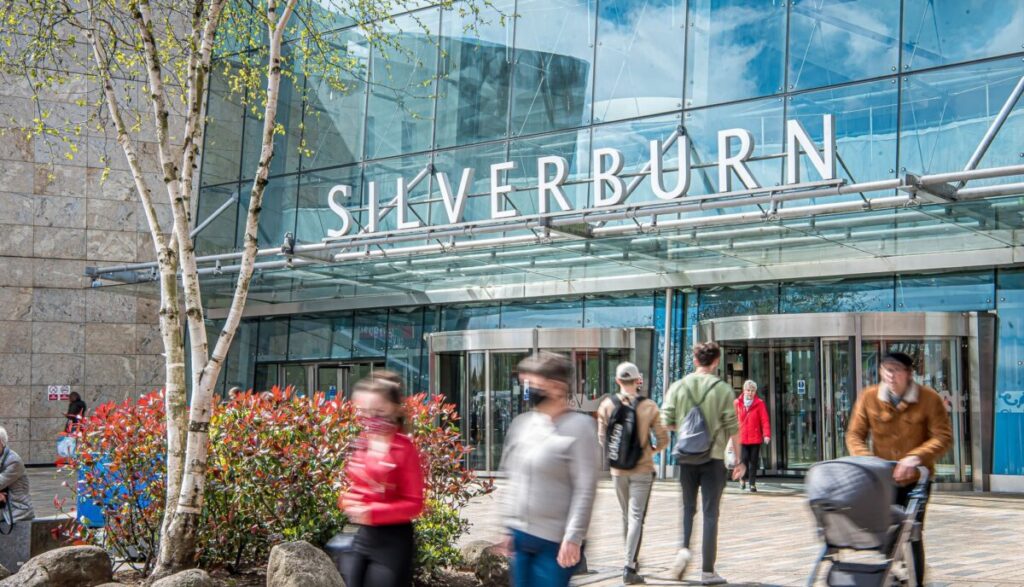
ACROSS: Let’s take a look at the investor side. Normally, investors are a bit reluctant to invest in fundamentally new directions. Furthermore, investors are not goldfish; they remember mistakes.
SANDFORD: We have very close and long-standing relationships with our investors. Investors are easy to deal with: Convince them by making money, which we do very consistently. The world of real estate investment is very small, and everyone talks to each other. We developed Puerto Venezia together with Orion Capital Managers and British Land. If you look at Orion Capital Managers’ new pitch book and fund portfolios, you will see Puerto Venecia on the first page. That pitchbook is available worldwide, which gives us credibility. Baupost, with whom we started the investment for UBBO in Lisbon, our second largest project after Puerto Venecia, is one of the most respected private equity firms in the world. Very few people have heard of them, but they are very well respected in the industry. We increased NOI from 12 million to 20 million there. We increased traffic from 14 million to 22 million. Word spreads rapidly throughout the industry. We are very happy with our investors, and they are happy with us.
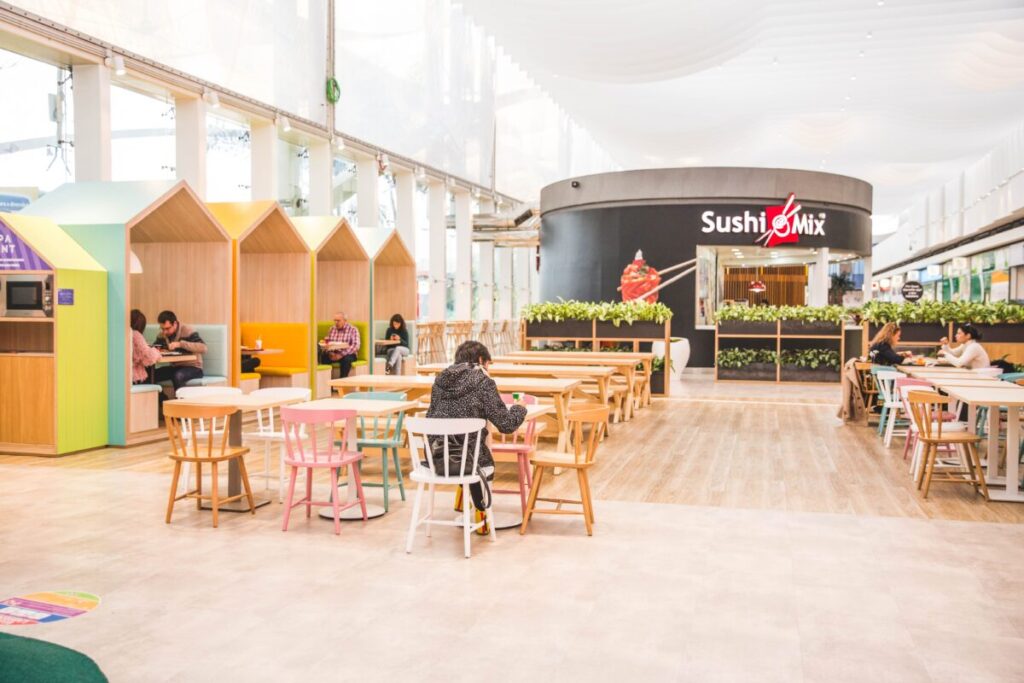
FOOD COURT AT UBBO: When Eurofund was looking for a designer for the food court at Ubbo, Lisbon, Portugal, the chosen designer informed them that he had never done a food court. “That’s fantastic; that’s exactly what I want,” said Sandford. It was important to make something different, where the guests felt welcome and comfortable. The result was a spacious, light-filled room with many different elements that allow for quiet work and social gatherings with the family.
ACROSS: When talking about resorts, hotels immediately come to mind. Are you interested in that asset class?
SANDFORD: Absolutely. I want to bring other uses to our centers. We are going to build a hotel at the Rhein-Ruhr Zentrum. The top floor of the Galleria, where offices are now, will be converted into a hotel. The site offers many opportunities to create beautiful gardens and swimming pools. There are a few conference centers in the region but hardly any good hotels. So, we offer real added value in the form of restaurants, a cinema, and other entertainment. Other types of use are fascinating.
ACROSS: What other combinations do you have at your centers?
SANDFORD: There is a hospital attached to Ubbo, which was an absolute turning point for us. Hospitals are brilliant because people arrive in the morning to drop someone off, then they usually have to wait two or three hours. They have the choice of sitting in a sterile waiting room, relaxing with us, shopping, or having coffee. It is also a private hospital, so the money is also there. Co-working space at shopping centers is another interesting topic. We have implemented exciting projects at our Silverburn center in Glasgow that are being used well. The combination of different types of use is key to success. Investors are also rethinking the issue. Fifteen years ago, they wanted “pure” assets. Today, they want a logical combination under one roof.
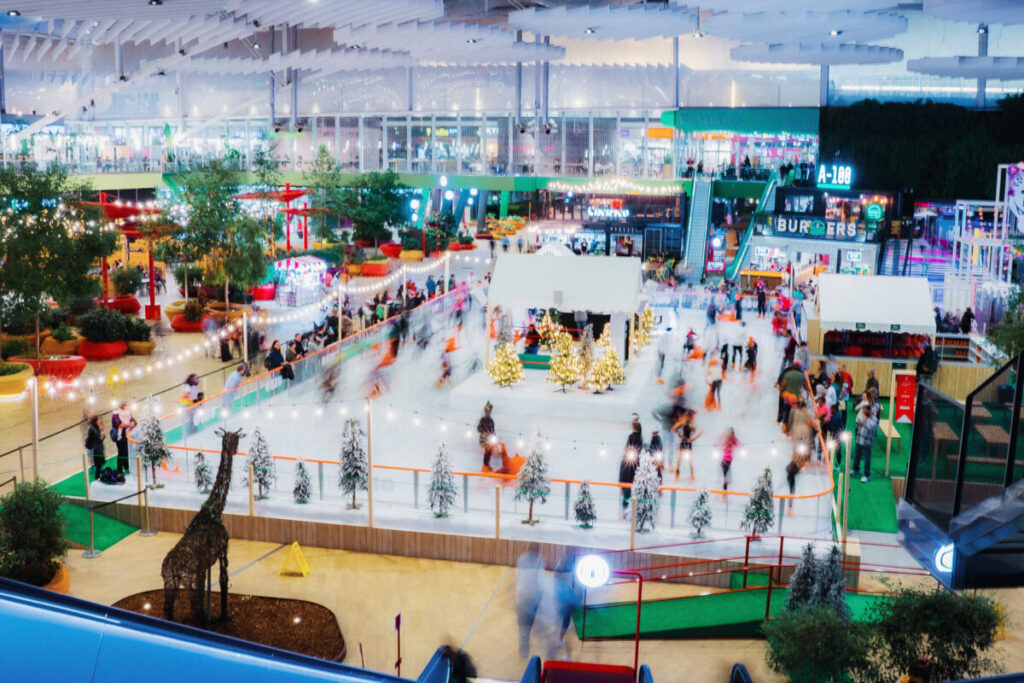
ACROSS: What are some of the other trends that will shape the future of shopping centers?
SANDFORD: The other big thing that I think will be a big trend at shopping malls is urban logistics. We design shopping malls in ways that makes them accessible for everyone. One straightforward example: We carried out a pilot project at Ubbo and completely changed the food delivery area. One thing that bothers me is that food delivery drivers park their motorcycles right at the entrance and wait for their orders at the restaurant counters, all while wearing their helmets and carrying their boxes. That’s why we’ve set up a riders’ lounge behind the restaurant area. They can sit down there, use the restroom, charge their cell phones, take a break, and wait for their orders. There is a vending machine where they can buy their own refreshments. They can reach the restaurant more quickly from there than via the main entrance. Turnaround time is crucial in the food industry and the algorithm shows that we are faster. As such, we give drivers many reasons to prioritize us. To date, such things relate more to food delivery, but with the advancement of omnichannel, this is becoming more and more of an issue for retailers. We will see more and more logistics running at shopping centers.
ACROSS: What is your favorite shopping center?
SANDFORD: My favorite mall is The Grove in Los Angeles. I went there once with my wife and three sons, and I always pointed out what was happening when I explained the appeal of malls. I suggested we go eat there and pass the time beforehand. There was actually a train that ran through the center. My youngest son was six and was obsessed with trains, so we got on the train. The conductor drove us through the mall and spoke into the microphone: “Welcome to the Grove, ladies and gentlemen. We are now driving past the Apple Store. Anyone who wants to buy the iPhone 16, please get off now.” It went on like that. It is brilliant what this center does to entertain customers and encourage them to shop. At the breakfast table the following morning, I asked my family what we should do that day, and they all wanted to go back to the mall. That is precisely what a shopping center or a shopping resort should be: a place that everyone can agree on at the breakfast table because everyone can find something for themselves there.
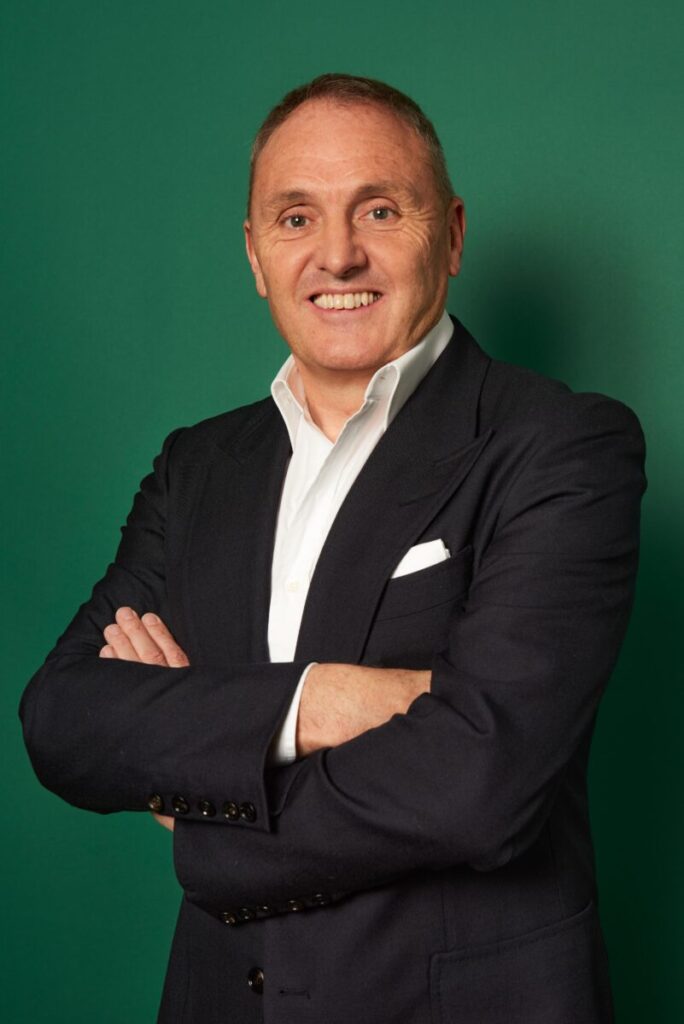
Ian Sandford
Ian Sandford is President of Eurofund Group
